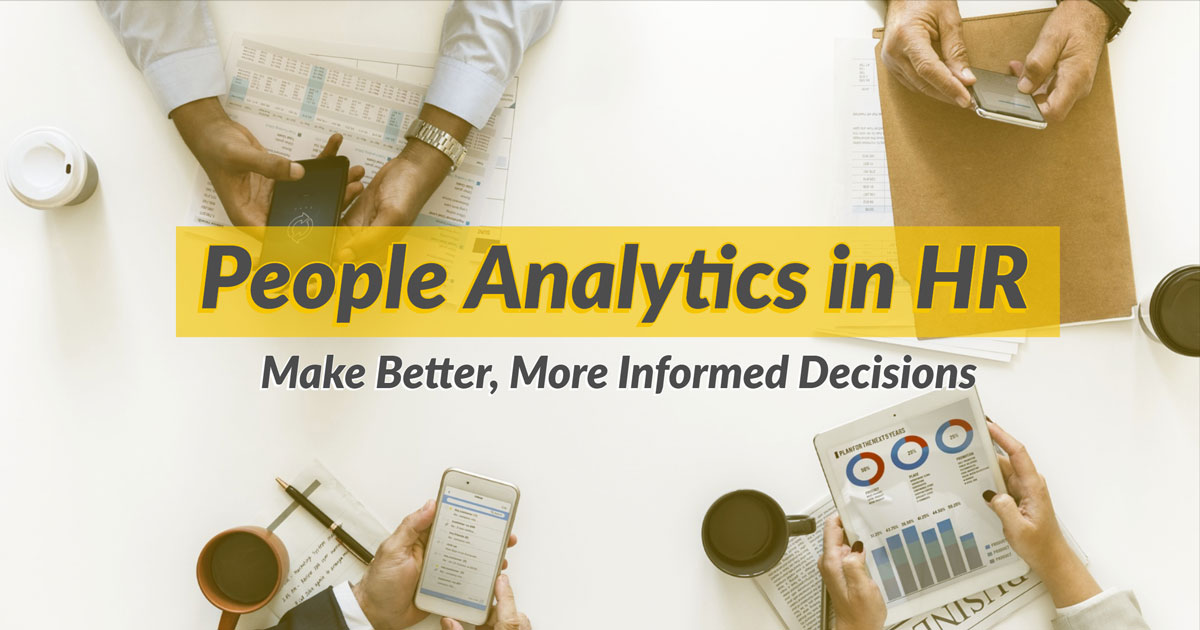People Analytics and HR: Employing Data Analytics to Make Better, More Informed Business Decisions
and Carla Patalano, NECB Program Chair and Professor, MBA and MHRM

Keeping a pulse on innovation and cutting-edge trends in HR is at the core of how New England College of Business (NECB) designs its programs, better preparing students for success in the real-world after they graduate.
One way NECB does this is by attending and speaking at conferences and events — meeting with and sharing experiences as well as key findings and learnings with other HR professionals and SMEs.
In June 2019, Dr. Carla Patalano, NECB Master of Human Resources Management (MHRM) Chair and Professor, and Dr. Rich Huebner, NECB Professor and Director of Data Architecture and Data Science at Houghton Mifflin Harcourt, are jointly presenting at the 2019 SHRM Annual Conference. Their presentation titled, “You Want Me to Do What?!: Introducing Analytics When You're an HR Department of One,” focuses on the workplace application of how to create a step-by-step plan for employing HR data visualization and analytics within an organization.
Regardless of the size of a HR department, organizations are calling on their HR practitioners to bring practical knowledge of analytics in setting up and executing a people strategy that supports business outcomes. While business analytics and data science have quickly become enmeshed in most aspects of business, the numbers reported by Deloitte’s HR study support what most HR practitioners already know — that HR’s use of analytics is still in its infancy.
In fact, a whopping 83% of companies have low people-analytics capabilities, according to the research from Deloitte. “People Analytics,” as it’s commonly termed, calls on HR departments to engage more deeply in analysis, data, and “number crunching” to support decision-making. Thankfully, HR has, at its disposal, a wide range of data available for analysis including;
- Recruitment and Selection Processes
- Employee Engagement Initiatives
- Compensation and Benefits
Analytics and evidence-based decision-making are now the “language of business,” so it is crucial for HR to be involved as much as they can be in building analytic capability, gaining more exposure to senior leadership, and earning a seat at the executive table.
SHRM has identified data-based HRM practices as a key component to the “Critical Evaluation” competency required for the “re-skilled” HR professional whose focus is on helping their organizations be competitive.
What is People Analytics?
People analytics is all about learning as much as we can through analyzing HR data. The data can be used in a descriptive way, to discover patterns in areas like;
- Employee Demographics
- Efficiencies in Recruiting Sources
- Pay Equity
- High Performing Employees
The data can also be used to build predictive capability and address questions such as;
“Which candidates will be the best fit for our culture?”
“How long will an employee stay with the organization?”
“Can we predict upturns or downturns in business performance based on people-related data?”
Eventually, companies will work on getting to prescriptive capabilities where they not only predict what will happen but also use these tools to inform what they should be doing in the future to influence behavior.
What’s the Challenge with Analytics and HR?
The primary challenge to wielding analytics tools in Human Resources is the skill gap.
HR professionals must first get down the basics in terms of data literacy and data analysis before jumping into the deep end with regards to predictive or prescriptive capability. Unfortunately, even these basics have not historically been taught in HR programs, so it’s not surprising that HR practitioners are forced to play “catch-up.”
There’s good news though! Both technology and education are stepping in to fill the knowledge gap in the people analytics space with regards to Human Resources.
Employing Analytic Technology in HR
The technology is finally here that the average HR practitioner — with a baseline understanding of data — can access.
For example, software tools — such as Tableau Desktop — have a relatively short learning curve, as they are designed to allow anyone to create data visualizations and explore their data easily. Data visualizations are a great way for HR practitioners, new to analytics, to start their journey. The benefit to using data visualizations in HR is that they can uncover patterns and lead to interesting insights that may not have been noticed in the past — and you can get that value out of these visualization tools very quickly. There’s clear and fast ROI in terms of the value tools like Tableau provide HR professionals.
The NECB Difference with Analytics and HR
In crafting NECB’s MHRM degree program (MHRM), Dr. Carla Patalano, MHRM Chair, identified the HR data analytics skill gap as one that the program must tackle to ensure graduates are positioned to be successful and have a competitive advantage over other HR professionals who did not receive the same data analytics education and real-world application.
Together, with Dr. Carla Patalano and Dr. Rich Huebner, NECB created a course that takes students well beyond the old-school static metrics of HR measurement — including a case where students face the challenge of introducing people analytics to the organization.
In this custom-designed case, NECB students learn how to use Tableau to explore a complex data set including demographic, employee and organizational performance data to identify challenges an organization is having. By doing this they uncover new and exciting possibilities to improve operational and business outcomes for the organization.
Find this article interesting? We will post a follow up article discussing people analytics in more depth with concrete examples of how students employ what they learn at NECB and apply it to the business.